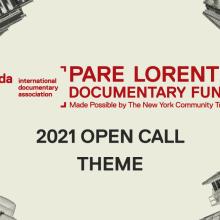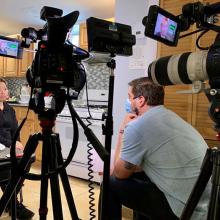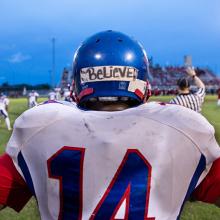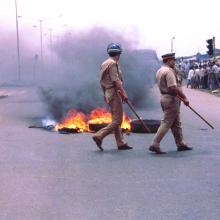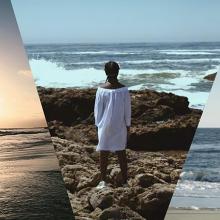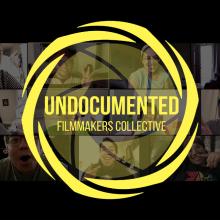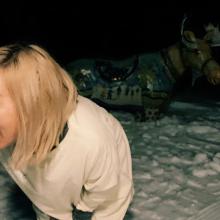This past year was challenging and full of despair. The names of George Floyd, Breonna Taylor, Ahmaud Arbery and numerous others lost to police brutality and white supremacy galvanized a nationwide movement—a reckoning long overdue. It was also the year the COVID-19 pandemic devastated our communities, especially impacting communities of color at the frontlines of the pandemic—the essential workers so quickly dismissed as low-skilled by a society that thrives off their precarity. And it was the year that forced many of us to grapple with our own mortality and the resilience of the communities
Latest Posts
It is difficult to write about higher education or media studies in 2021, or anything actually, without invoking the C-word: COVID. Although we may attempt to downplay it, its influence has been overwhelming, eclipsing practically everything and everyone in its path. For the documentary students and faculty of Columbia University’s Journalism School, the pandemic presented a particular challenge, a puzzle that the news agencies and entertainment industries were just beginning to grapple with: How do you tell a person’s story if you cannot interact directly with that person? To discover the
Over three years ago, I wrote in this magazine about my entry into the documentary film industry, some funding strategies I'd employed, and key lessons I'd learned along the way. I left the piece open-ended by design because I was still so new with much to learn and I thought I might someday want to write a sequel. Back then, I was in the throes of my first producing gig while also supporting other projects and film nonprofits with grants. I wondered what it would be like to operate as producer and funder simultaneously and how the experiences would shape my future place in the industry. Now
The documentary form lends itself to many different types of storytelling, but its most crucial purpose remains bearing witness to history. Especially the parts of history that those in power would prefer to erase. As such, the films of Anand Patwardhan are a record of India’s moral and systemic failings, written in indelible ink. Patwardhan has been India’s most prominent and unapologetic documentary filmmaker since 1974. Through more than a dozen films and experimental videos in between, Patwardhan has painstakingly chronicled the country’s departure from its secular, pluralist ideals to the
A Love Song for Latasha, the Academy Award-nominated short from Sophia Nahli Allison, opens with the rewind of a VCR tape image, a slow breath of ocean waves in front of a young black girl in a flowy dress. Narration follows from Latasha Harlins’ best friend Ty retelling how they met after Latasha saved her from bullies at the swimming pool. You may think that you already know Latasha Harlins’ story after seeing the widely circulated media footage of the last few minutes of her life in 1991, when she was gunned down by a convenience store owner in South Los Angeles, where Allison grew up. But
Imagine a space where filmmakers can discuss the issues they are facing in their careers and find a community of support. The Undocumented Filmmakers Collective (UFC) is that safe, inclusive space. “We're like roommates that are virtually living together,” says Set Hernandez Rongkilyo, co-founder of UFC and director of the documentary COVER/AGE, which he made in conjunction with California Immigrant Policy Center. Communicating from around the US, the group relies on Zoom calls to discuss pressing topics. “For the most part, sometimes we would have seven-hour Zoom calls,” Hernadez Rongkilyo
Screen Time is your curated weekly guide to excellent documentaries and nonfiction programs that you can watch at home. Although he did not capture the Best Actor Oscar for his final role, in Ma Rainey’s Black Bottom, Chadwick Boseman made his mark in his short, incandescent life as one of the finest actors of his generation. Chadwick Boseman: Portrait of an Artist, streaming on Netflix through May 17, captures scenes from his meteoric career, as well as testimonials from some of the artists who worked with him: Viola Davis, Denzel Washington, Spike Lee, George C. Wolfe, Branford Marsalis
Essential Doc Reads is our curated selection of recent features and important news items about the documentary form and its processes, from around the internet, as well as from the Documentary magazine archive. We hope you enjoy! Hyperallergic’s Justine Smith argues for Oscar categories for documentary editing and cinematography. The days of nonfiction film as a niche are over. Encouraging greater understanding and appreciation for how documentaries are made could serve an essential role in increasing media literacy. This may be overly optimistic, since most of the public and Academy voting
Sue Kim is the daughter of Korean immigrants. She was raised in Detroit, Michigan, and she graduated from UC Berkeley with a BA in English Literature. Before moving into documentary filmmaking, she spent 20 years as a commercial producer, making award-winning content for brands like Nike and Adidas. Her directorial debut, The Speed Cubers, follows the lives of two Rubik’s Cube-solving champions, Max Park and Feliks Zemdegs and the friendship that ensues. The film premiered on Netflix in July 2020, and has been nominated for a Critics Choice Award and was shortlisted for an Academy Award for
Newly appointed IDA Funds and Enterprise Program Director Poh Si Teng is no stranger to challenges in nonfiction storytelling. From her childhood as an ethnic and religious minority in Malaysia, where media is heavily regulated by the state, to her experiences working as a journalist in predominantly white newsrooms in the United States, Poh has a deep understanding of the interplay between media, politics and power. She brings an impressive array of global experience to IDA. She worked as independent filmmaker in India for years, and then as an award-winning staff reporter for The New York
